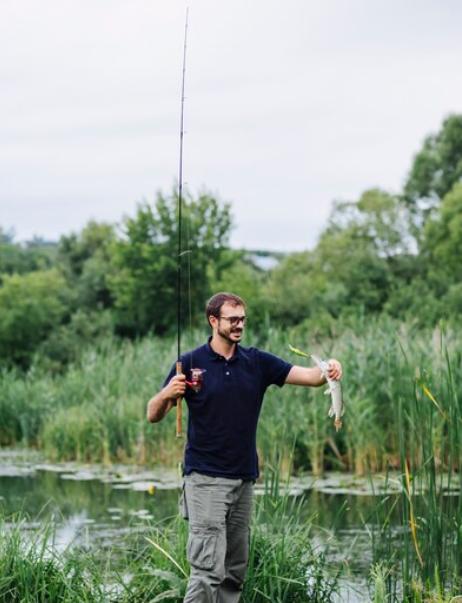To reel in a fish on a fly rod, maintain a tight line and use the rod’s flexibility to absorb the fish’s movements. Guide the fish by turning your rod in the direction you want it to go.
Reeling in a catch with a fly rod is an exhilarating experience that demands skill and patience. Whether you’re knee-deep in a serene stream or beside a bustling shore, mastering the art of fly fishing can turn a regular outing into a memorable adventure.

Essential to this practice is the technique of reeling in your catch. Anglers must harmonize the delicate balance of controlling the tension and using the rod’s elasticity. This ensures the fish does not snap the line or slip the hook. Beginners and seasoned fishermen alike can revel in the triumph of a successful catch by employing proper reeling technique, a cornerstone of fly fishing finesse. Let’s check How to Reel in a Fish on a FlyRod.
Mastering The Basics Of Fly Fishing

Commencing on the journey of fly fishing is both exhilarating and nuanced. For novices and seasoned anglers alike, understanding the fundamentals of using a fly rod is the cornerstone of a successful catch. This post will guide you through mastering your equipment, from choosing the right rod to the intricate details of reels and arbor size. Clasp these basics, and you’ll be reeling in fish with confidence and precision.
Understanding Fly Rods And Reels
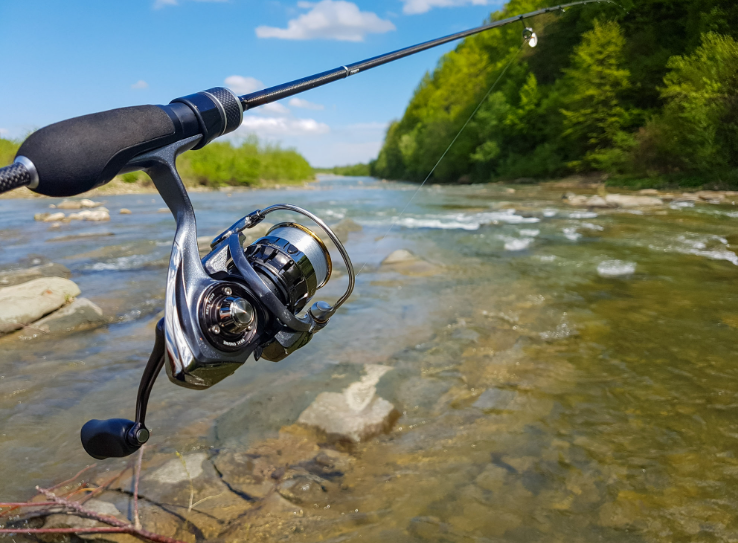
The dynamic duo of fly fishing is the fly rod and reel. Essential to casting, these tools require synergy for optimal performance. Fly rods are designed to propel the line forward, casting the fly to the desired location. Reels, on the other hand, serve to hold the line, provide smooth retrieval, and manage the drag when fighting a fish. Familiarity with your rod and reel sets the stage for an effective fishing experience.
Selecting The Right Fly Rod
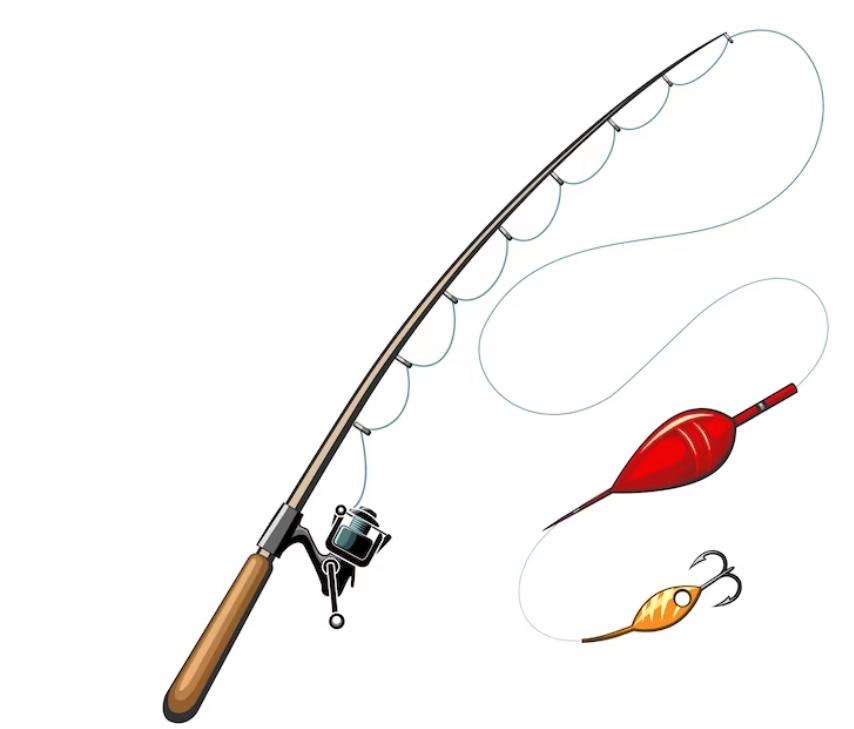
Selecting a fly rod is a critical decision that should reflect not only personal preference but the specific conditions you anticipate. Factors such as the fish species, environment, and your casting style influence your choice. A rod that feels comfortable in your hands and suits your fishing scenario is a trusted ally on the water.
Matching Rod Weight To Targeted Fish
The weight of a fly rod directly correlates to the type of fish you aim to catch. Heavier rods accommodate larger fish and vice versa. Here is a breakdown of rod weights aligned with common catches:
- 1-3 weight: Ideal for small streams and panfish.
- 4-6 weight: Versatile for trout and some bass fishing.
- 7-9 weight: Suitable for larger freshwater species and light saltwater fishing.
- 10+ weight: Targeted towards big game fish in saltwater environments.
Choosing The Ideal Rod Length For Different Conditions

Rod length is a pivotal aspect that determines your casting capability across a few conditions. Shorter rods are excellent for tight, overgrown areas, allowing for precise maneuvers. Longer rods excel in open spaces where longer casts are advantageous. A range between 8.5 to 9 feet is commonly chosen for its versatility.
Picking The Right Fly Reel
The fly reel is not merely a storage spool for the line; it plays a significant role in landing your catch. Opting for a reel that is balanced with your rod ensures smoother casts and less fatigue. The reel’s drag system is paramount in applying the correct tension to fight and tire out fish effectively.
Understanding Arbor Size And Its Impact On Retrieval Rate
The arbor size of a fly reel influences how quickly you can reel in line. Larger arbors offer a higher retrieval rate, beneficial for situations that require you to rapidly take up slack. Standard arbor sizes vary, with larger diameters being preferable when long runs are expected, such as with strong fish or in swift currents.
Essential Skills For Successful Fly Fishing
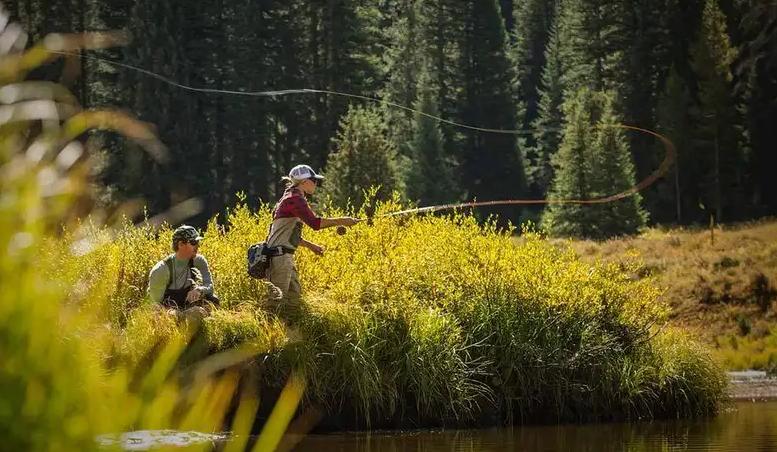
Commencing on the journey of fly fishing requires a confluence of skills, patience, and the correct approach. Whether you are a beginner angler or an enthusiast looking to refine your techniques, understanding the essential skills for successful fly fishing is crucial. It’s not just about casting your line and waiting for a fish to bite; it’s an art that merges grace, timing, and precision. Below, we’ll Investigate into fundamental skills every fly fisherman should master to reel in a catch effectively with a fly rod.
Perfecting The Fly Casting Technique
Central to fly fishing is the ability to cast the fly accurately and smoothly onto the surface of the water. This skill allows you to place the lure exactly where you need it, mimicking the natural movement of prey to entice fish. To perfect this technique, unceasing practice is a must. Start by focusing on your grip, ensuring your hand is in the proper position on the fly rod. Next, practice the back-and-forth motion, which involves loading the rod with energy on the backcast and smoothly transferring that energy into your forward cast.
Knowing The Importance Of Timing And Rhythm
Timing and rhythm are the heartbeats of fly fishing. Synchronizing your casts with the natural cycles of the fish and their feeding habits ups the chances of success. Maintaining a rhythm in your casting stroke prevents the line from tangling and ensures a controlled, precise presentation of the fly. It’s not just about the speed but also about the flow of your movements.
Understanding The Role Of Wrist/arm Action
Knowing how and when to employ wrist and arm action in your cast defines the sharpness and range of your cast. Fly fishing typically necessitates a firm wrist to facilitate the proper snapping motion. Complement this with a synchronized arm motion to optimize the power transfer throughout your cast. Remember, the wrist sets the angle, and the arm drives the distance.
Identifying The Right Casting Stance
Your stance acts as your anchor. A stable and balanced stance ensures you remain steady during the cast, providing the foundation for all your movements. Ideally, feet should be shoulder-width apart, knees slightly bent, and your body turned to the side of your target area. This position offers both stability and flexibility, allowing for a full range of motion.
Mastering The Art Of Line Control And Fly Presentation
Line control and fly presentation are vital in convincing fish to strike. Mastery here entails managing the slack, understanding the current, and manipulating the line accordingly. Accurate mends, delicate presentations, and intuitive line adjustments can make all the difference between a day of misses or a triumphant catch. As you finesse your line control, the fly’s imitation of living insects or baitfish will improve, making your lure irresistible to the fish.
How To Hook And Play A Fish
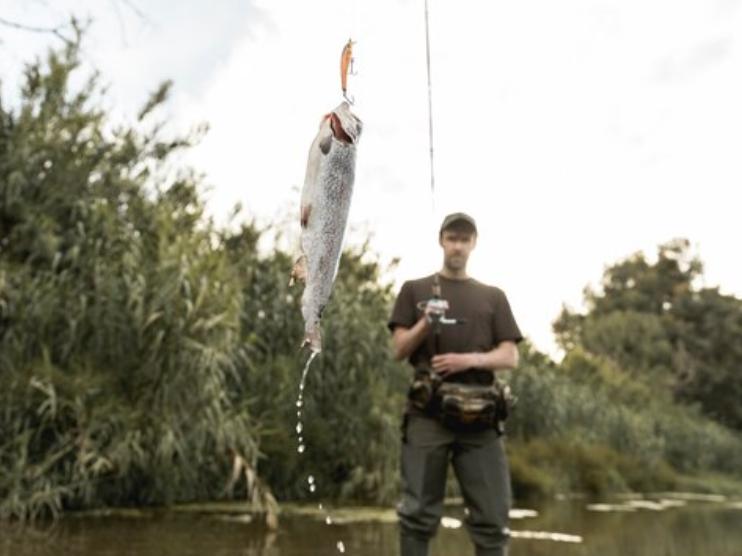
Welcome to the ultimate guide on How to Hook and Play a Fish when you’re fly fishing. Mastering the art of setting the hook and playing a fish properly is crucial for the successful catch and release of these beautiful creatures. Not only does it increase the odds of landing a fish, but it also ensures the fish’s wellbeing after release. Engage with these essential tips to transform your fly fishing technique into an art form.
Setting The Hook With Precision
The moment of truth in fly fishing is setting the hook. Success hinges on a swift yet calculated motion that secures the fly in the fish’s mouth without snapping the line. Proper technique involves a quick and firm upward movement of the rod tip, but not with excessive force that could risk equipment or the catch itself. It’s a delicate balance that requires a bit of practice to perfect.
Recognizing The Subtle Signs Of A Fish Bite
It’s essential to stay vigilant and attuned to the nuanced signs that a fish has taken your fly. Often, it’s not the dramatic splash but rather the slight tugs or changes in the line’s tension that indicate a bite. Keeping a close eye on the line and leader for any unusual movement can be the difference between a missed opportunity and a triumphant catch.
Timing The Hook Set To Avoid Premature Strikes
The window between a fish biting and getting away can be extraordinarily narrow. Striking too early can pull the fly away before the fish has fully taken it, while striking too late might give the fish a chance to spit out the fly. Observation and experience will refine your timing, enabling you to set the hook at just the right moment.
Playing The Fish With Finesse
Once hooked, the dance begins. Playing a fish requires a blend of patience and finesse rather than raw power. The goal is to tire the fish while maintaining control, using gentle but firm rod movements to direct the fish away from potential snags and towards open water.
Understanding Tension And Rod Angles During The Fight
Constant tension is critical during the fight, but knowing how much to apply and from which angle comes with practice. Maintaining the right rod angle—not too high, not too low—keeps pressure on the fish and prevents the line from slacking. Adjusting the tension and rod positioning in response to the fish’s movements is an art that, when mastered, results in an epic and memorable catch.
Expert Tips For Reeling In Fish On A Fly Rod

Every angler yearns for that exhilarating moment when a fish is on the line—especially on a fly rod. The dance that follows is a delicate strenuous balance of skill, patience, and understanding. This guide is a treasure trove of tips and techniques to help you skillfully reel in fish with your fly rod, ensuring your efforts culminate in triumphant success, rather than a fish tale of the one that got away.
Understanding Retrieval Techniques
Retrieval techniques are the core of a successful catch in fly fishing. These methods vary greatly and can influence the outcome of your fishing expedition. It’s essential to match your retrieval method with the behavior of the fish you are aiming to catch. Techniques range from slow, methodical strips to quick, erratic spurts that mirror the movement of live bait in water.
Navigating The Water Column Effectively
Fish inhabit different layers within the water column, and as an angler, you must learn to navigate these layers strategically. Using an appropriate line—whether it’s floating, sinking, or sink-tip—can determine whether your fly reaches the feeding zone of your target species. Make sure to:
- Understand the depth at which the fish are swimming.
- Select the right fly pattern for the depth.
- Adjust your casting technique to accommodate the water depth.
Adjusting Retrieve Speed Based On Fish Behavior
Observing fish behavior is crucial when determining the speed of your retrieve. On days when fish are aggressively feeding, they might be more responsive to a faster retrieve. Conversely, during times when fish are lethargic and slow, a sluggish, deliberate retrieve might be more effective. Always be prepared to adapt your retrieve speed to the activity level of the fish.
Mastering The Art Of Playing The Current
Currents can be your ally or adversary. Successful fly anglers comprehend the complexities of the current and use it to their advantage. This mastery involves presenting the fly in a natural manner that replicates native aquatic creatures. By mending the line and adjusting the tension, you can guide your fly to drift or swim as desired, enticing fish to strike.
Manipulating The Fish With Line Control And Rod Movements
Once a fish is hooked, the real test of skill begins. Line control and deliberate rod movements play a pivotal role in gently steering and eventually landing the fish. The key lies in maintaining a fine balance—applying enough pressure to tire the fish but not so much that the line breaks or the hook pulls free. Your rod should act as a shock absorber to the fish’s thrashes, with the line tension adjusted dynamically to react to the fish’s movements. Master this, and you’ll transform your fly fishing experiences from near catches to trophy photographs shared among peers.
Landing Your Catch And Proper Release Techniques

Mastering the art of fly fishing doesn’t end when you hook a fish. Bringing your catch to the bank and releasing it responsibly is Alike important. In this section, we’ll go over the important steps and techniques that help anglers reel in their catch smoothly and release it correctly to ensure the fish’s survival and the preservation of aquatic ecosystems. Prepare to dive into the world of skillful landings and ethical release practices that will enhance your fly fishing adventures.
Navigating Landing Scenarios
Every fly fishing catch presents a unique landing scenario. Factors such as the water environment, fish behavior, and angler positioning play crucial roles in this phase. Whether you’re on a calm stream or fighting the current, the key is to maintain control over the line. Adjust the drag on your reel and let the fish run if necessary, but always keep tension. A steady hand and patient approach are your best tools here.
Dealing With Varying Fish Sizes And Species
Size and species impact how you handle a fish. Smaller fish may be brought in more quickly but require delicate handling to avoid injury. Larger fish demand a more strategic approach, often involving playing with the fish to tire it out. Species like trout possess delicate mouths that can be easily damaged, indicating the need for a gentler landing method.
Utilizing Different Landing Tools And Techniques
- Netting: A soft-mesh landing net minimizes damage to the fish’s slime coating and is invaluable for securing your catch.
- Hands: Wet hands or gloves can help grip the fish firmly without removing its protective slime layer.
- Lipping tools: For species that can be safely lipped, specific tools are available that can help control the head of the fish while you unhook it.
Being proficient with these tools and techniques will lead to efficient landings and healthier releases.
Safely Releasing The Fish
Safety is paramount during release. The objective is to return the fish to the water in the best possible condition. Use wet hands or release tools to handle the fish minimally. If you must lift the fish, do so quickly and close to the water surface to avoid potential injuries from dropping it.
Minimizing Stress And Maximizing Survival Rates
Minimizing stress is crucial for the fish’s post-release survival. Keep the fish submerged in water while removing the hook to reduce air exposure. If the fish is exhausted, support it gently in the water and allow it to recover before letting go, moving it slowly back and forth to promote oxygen flow through its gills. By adhering to these practices, anglers substantially improve the odds of a full recovery for their catch.
Frequently Asked Questions For How To Reel In A Fish On A Fly Rod
What Is The Best Technique For Fly Fishing?
When it comes to fly fishing, mastering the art of presentation is crucial. To answer the question, “What is the best technique for fly fishing?” consider many factors, including the weather conditions, the choice of fly, and the presentation method.
Understanding the best conditions for fly fishing is essential. A cold front, for example, can influence fish behavior, making it important to adapt your approach. To enhance your fly fishing, focus on refining your casting techniques. The snake roll technique, for instance, can be particularly effective in certain situations.
Selecting the right lure is alike vital. A hopper dropper or the classic elk hair caddis and pheasant tail nymph are reliable choices. Whether you’re targeting trout, bass, or saltwater fish, tailor your approach accordingly.
In the realm of dry fly fishing, employ tips and tricks to optimize your experience. Learn how to present the fly with finesse and employ dry fly fishing tips for a successful outing.
Remember, the key to success lies not just in hooking the fish but also in the thrill of the fight. In the outro, we’ll Investigate deeper into the nuances of fighting the fish and leave you with valuable insights on perfecting your fly fishing technique. Stay tuned!
How Do I Set The Hook When Fly Fishing/How to Reel in a Fish on a FlyRod?
To set the hook effectively in fly fishing, employ a swift yet moderate upward lift of the rod. This action should be firm to secure the hook in the fish’s mouth but gentle enough to avoid snapping the line or losing the fish.
Can You Fly Fish In Any Weather Condition?
Yes, fly fishing can be done in many weather conditions, but success may vary. Overcast skies can often lead to more productive outings as many fish feel safer from predators and are more willing to feed. Always dress appropriately and take safety precautions.
What Gear Is Essential For Fly Fishing?
Essential fly fishing gear includes a fly rod, reel, specialized fly line, and an assortment of flies matching insect hatch or prey in your fishing location. Waders and polarized sunglasses can also enhance your experience, offering comfort and better visibility.
Conclusion
Mastering the art of fly fishing is both an adventure and an art form. Armed with the strategies from this guide, you’re set to hook, play, and land fish with confidence. Clasp these techniques, and each cast brings you closer to becoming a proficient angler.
So, gear up, step into the water, and let the thrill of fly fishing begin!

